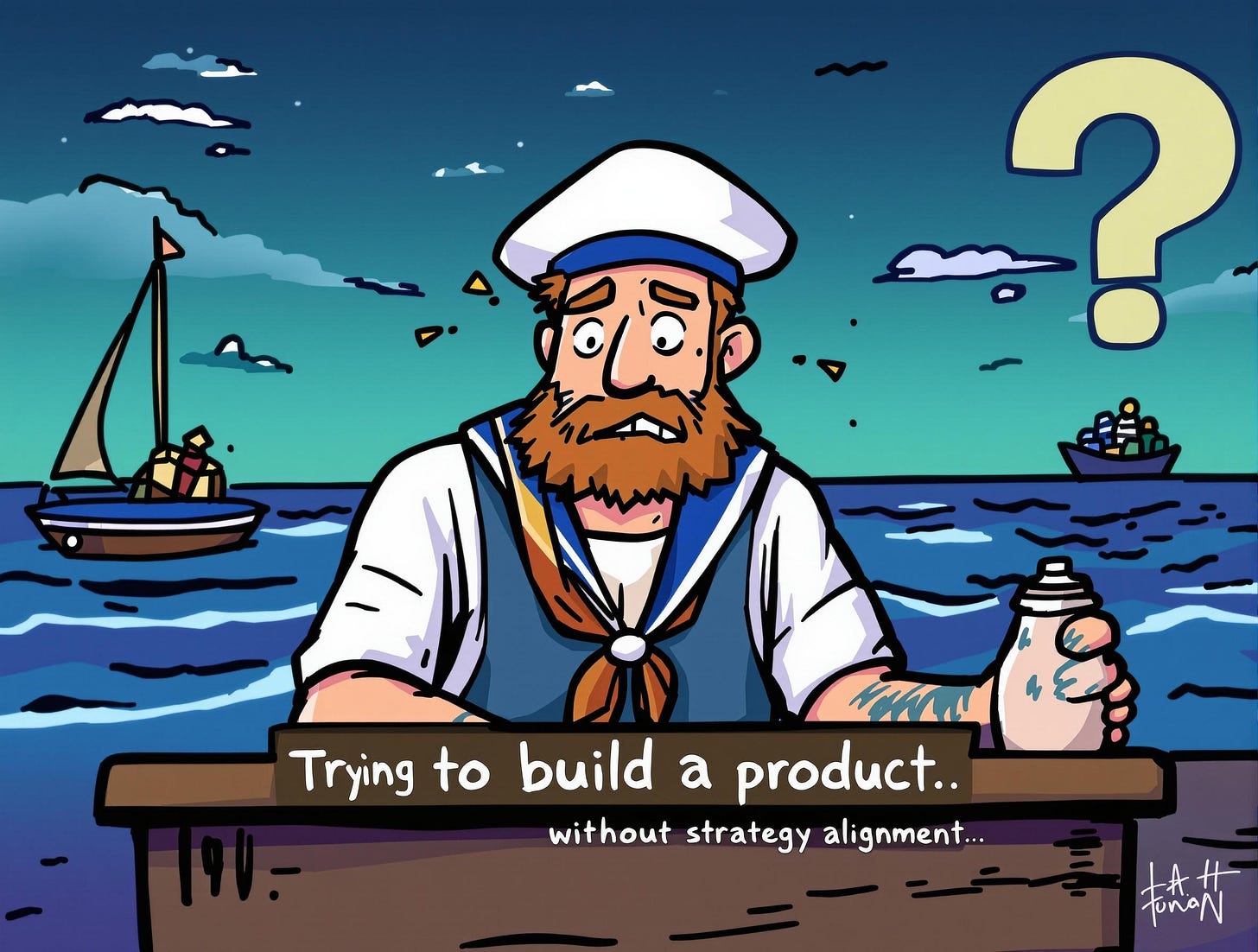Your Product’s Failing—Fix It with This One Move 🎯
70% of products flop due to misaligned strategy. Learn 5 reasons alignment is make-or-break + 4 steps to nail it. Build products that win!
Aligning Requirements to Business Strategy: The Key to Building Products with Purpose 🎯
I’ve seen a $5M product crash and burn because of one fatal flaw: no alignment with business strategy. Six months of work, endless meetings, and a heartbroken team—all wasted. Don’t let your product be next. Here’s how to build something that wins. 🔥
Why Strategy Alignment Is Make-or-Break
Alignment isn’t a buzzword—it’s your lifeline. Without it, you’re building in the dark. Here are five reasons why tying requirements to strategy is non-negotiable:
1. Crystal-Clear Direction for Every Move
Alignment ensures every feature, sprint, and bug fix supports your company’s big-picture goals. Take Airbnb: their strategy was “build trust in travel.” Every requirement, from verified host profiles to secure payments, tied to that vision, fueling their $100B valuation. Without alignment, you’re guessing—and guessing leads to flops.
💡 Takeaway: Map every requirement to a strategic goal (e.g., “grow user trust 20%”) to stay focused.
2. Prioritize Like a Pro, Slash the Noise
Product teams drown in tasks—features, fixes, stakeholder demands. Alignment cuts through the chaos by spotlighting what drives value. A SaaS startup I advised had a “scale to 1M users” strategy. They ruthlessly prioritized features like seamless onboarding over nice-to-haves like custom themes, doubling revenue in 18 months. Misaligned priorities? You’re just burning time.
✅ Pro Tip: Use a weighted scoring model (e.g., impact on strategy vs. effort) to rank tasks.
3. Get Teams Rowing in Sync
Misalignment sparks chaos—devs build one thing, execs want another, and you’re stuck in the middle. Alignment creates a shared “why.” When Slack launched, their strategy was “simplify workplace communication.” Every requirement (e.g., real-time messaging, integrations) was vetted against that goal, uniting teams and cutting rework by 30%. No alignment? Expect endless arguments.
🤝 Key Insight: Kick off projects with a strategy alignment workshop to get buy-in.
4. Turn Dollars into Dominance
Every resource counts, and misalignment wastes millions. A retailer I worked with aligned their app requirements to an “omnichannel growth” strategy, integrating in-store and online experiences. Result? 25% sales growth in a year. Contrast that with a competitor’s misaligned app—$10M spent, zero impact, and a scrapped project. Alignment maximizes ROI.
💰 Think Big: Tie every budget line to a strategic outcome (e.g., “increase market share 10%”).
5. Build Products That Outlast Trends
Markets shift—fast. Aligned products adapt because they’re rooted in strategy, not whims. Netflix’s pivot from DVDs to streaming was driven by a “future of entertainment” strategy. Every requirement (e.g., streaming tech, original content) supported that vision, leaving Blockbuster in the dust. Non-aligned products? They’re obsolete before launch.
🔮 Stay Sharp: Stress-test requirements against long-term goals (e.g., “Will this scale in 3 years?”).
4 Steps to Align Requirements Today
Know the North Star: Dig into your company’s strategy (e.g., “expand to new markets”). Ask execs for clarity if needed.
Rally Everyone: Host a kickoff aligning devs, product, and stakeholders on strategic goals.
Measure Success: Set KPIs tied to strategy (e.g., “boost retention 15%”).
Stay on Course: Review alignment quarterly to adapt to strategic shifts.
Your Product, Your Legacy
Misalignment buries products. Alignment builds legends. Don’t let your next launch flop—make it a triumph. 🚀
If this lit a spark, hit ❤️—it fuels more content like this!
Your Turn!
What’s your go-to trick for aligning requirements with strategy? Or spill the tea: ever seen a product tank due to misalignment? Comment below—I’ll reply to every one! 👇
Liked this deep dive on Business Strategy?
I share weekly tips to help you master [BA/ML skills], save time, and crush your goals—like cutting rework by 50% or boosting model accuracy 15%. Join 50+ readers for the next post and grab exclusive templates (coming soon)! Don’t miss out—subscribe now and share your thoughts below. Let’s grow together!
🔗 Follow me on LinkedIn for updates, industry trends, and fresh perspectives you won’t want to miss.
— Monica | The Data Cell




